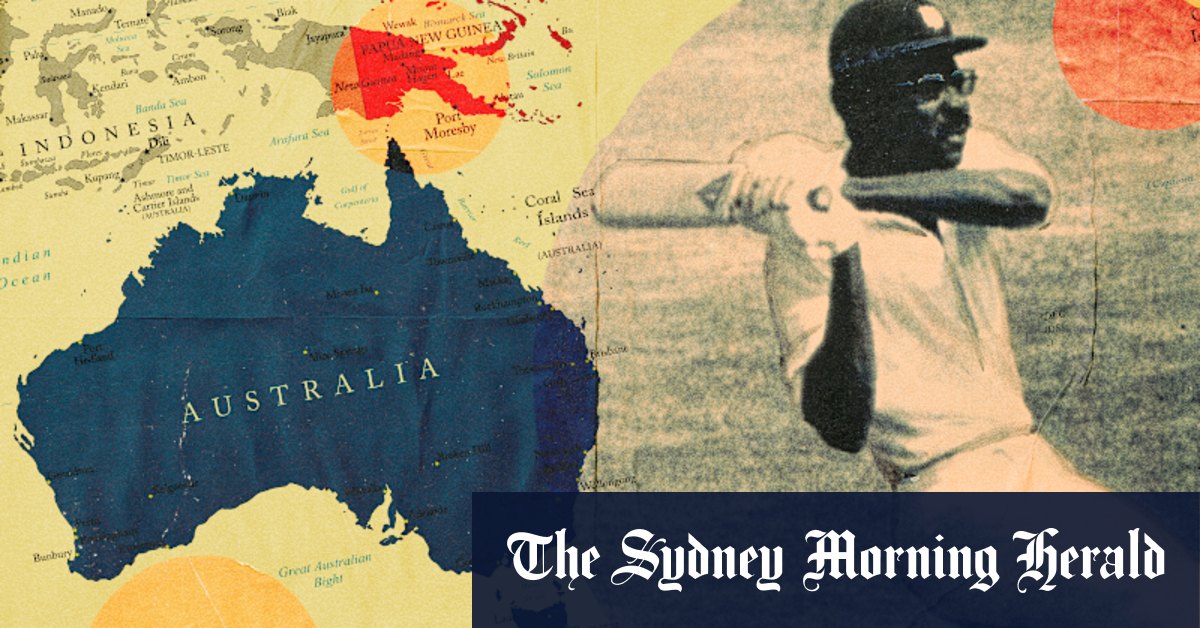Normal text sizeLarger text sizeVery large text size
A funny thing happened on the way to Australia, 50 years ago, before cricket’s calendar was drafted by the dollar. Clive Lloyd’s West Indies stopped off in Papua New Guinea and played two games against the local national team, on canvas pitches stretched over concrete.
“I can’t tell you how wonderful it was,” Lloyd, now 81, says from his London home. “Although it’s all those years ago, I still remember it like yesterday. Wonderful country, wonderful people. They made us feel thoroughly at home.”
The timing was exquisite. Four months earlier, Lloyd’s team had defeated Australia at Lord’s to win cricket’s inaugural World Cup. The imminent 1975-76 summer – a world Test championship before it had a name – “didn’t end up too well, cricket-wise,” Lloyd reflects. “But it was a learning curve.”
Indeed. Other than a 1-0 glitch in India when weakened by Kerry Packer’s breakaway World Series, the rampant West Indies didn’t lose another Test series until 1995.
For cricket fans in PNG (there were and still are many), the October stopover crowned a party that began on September 16, when independence was achieved after decades of being governed as a territory of Australia. The significance was not lost on Lloyd, whose native Guyana experienced a similar cutting of the apron strings from Great Britain in 1966, the year he played the first of his 110 Tests.
“You could see the Australians and the locals were very together – they were helping them in trying to move forward as a nation. We were the first people to celebrate with them. We found it a very special occasion.”
Games were played on consecutive days, in Lae and Port Moresby. Snippets of footage show the squad arriving at the airport, Lloyd interviewed on the tarmac by Richie Benaud (big-collared ’70s shirt unbuttoned to the sternum). There is some action from the Lae game, and delightful footage of kids in the crowd, agog as the West Indians do some catching practice next to buai (betel nut) trees with Mt Herzog in the distance.
Gordon Greenidge wears the same pale blue terry-towelling hat he’d donned in the World Cup final. At a drinks break, he takes a glass from a tray, swigs something too sweet, and promptly spits it on the ground. Viv Richards, 23 and about to become the most destructive batsman in the game, hams it up for the camera as he accepts a gong for highest score. Broad smiles and hoots of laughter are constants.
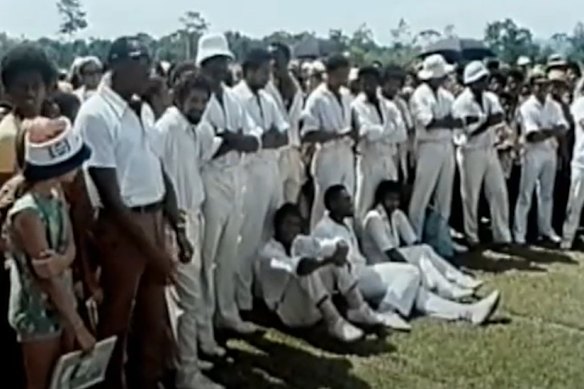
Clive Lloyd’s West Indies team during their PNG stopver. Credit: YouTube
At a formal reception, PNG governor general John Guise presents the tourists’ team manager Esmond Kentish with a wooden bird-of-paradise carving as a gift. A beaming local waiter displays platters of nibbles that would have done Don’s Party proud. Kentish tells the gathering the West Indies have visited “as a gesture to show ourselves as potential leaders in world cricket”.
Lloyd’s most vivid memory is enjoying a “mumu”, a traditional meal of meat and vegetables wrapped in banana leaves and cooked in coals in the earth. “It’s something people used to do in the West Indies years ago. And the meat was so soft, it was wonderful.”
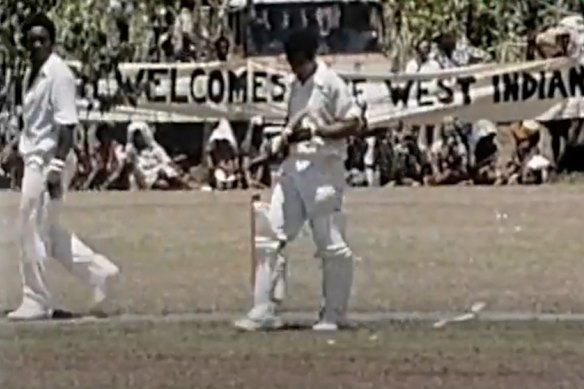
The Windies were welcomed by PNG fans. Credit: YouTube
He remembers “some very good cricketers” playing for PNG, too. Among them in the Moresby game was Ilinome Tarua, who had much to celebrate.
Growing up on Kwato Island, at PNG’s south-eastern tip, Tarua absorbed his fast-bowling father’s love of cricket. “We had a radio. When overseas cricket was on, we put the radio on wherever we go. My father was a great supporter of the West Indies.”
In 1972, he was one of the first two law graduates from the University of Papua New Guinea, where he also captained the cricket team. The next year he had oversight to PNG’s self-governance, and by the time the Windies came calling, he was Prime Minister Michael Somare’s legal advisor.
Now 83 and living in Sydney, he’s excited to revisit everything about that time, not least the cricket. “I still have a feeling about the wonderful experience I had playing against them, even though it was overwhelming.”
Five decades on, the sense of opportunity lost in his inning of nine runs remains. “Viv Richards was bowling and I misread him, I was really annoyed with myself,” Tarua says. “I was looking for the spin and it was a straight ball!”
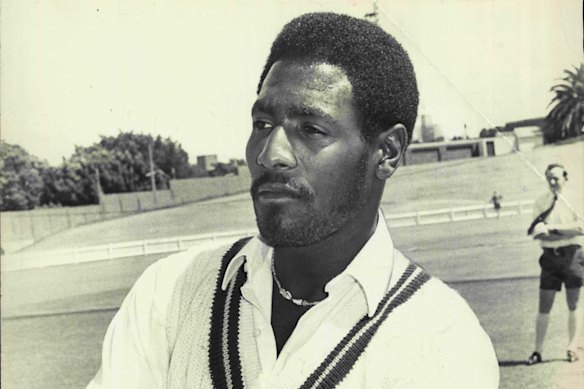
Vic Richards in 1975.Credit: The Age
High Commission postings took him to London and New Zealand; Tarua was also PNG’s ambassador to the United Nations, Germany, Italy, Israel and Greece. He and wife Susan, who met at university, moved to Sydney in 1991 after his last diplomatic service role, as consul general. He played cricket throughout, captaining teams and making runs, including an unbeaten hundred.
And after playing against the mighty West Indies, he bowled part-time spin – just like Viv. “I tried to copy him!”
Taunao Vai observed a more high-octane impact on young locals who saw the West Indies win by 70 runs in the 25-over Lae game, and 86 runs in a 40-over contest the next day at Port Moresby’s Sir Hubert Murray Stadium. “The young generation, the teenagers, they started to copy the fast bowlers,” Vai says. “They thought, yeah, fast bowling was it! Everyone started taking the long run-ups.”
An opening batter who was studying economics at UPNG, Vai credits the dean of the law faculty – a well-connected West Indian named Professor James – with making the quirky micro-tour happen. Lloyd’s recall runs no deeper than simple good manners – sensing an unforgettable independence celebration opportunity, Cricket PNG proffered an invitation, and the Windies said sure, why not?
Mark Davis is originally from Melbourne, and was working as a journalist with the Post Courier. He met local woman Olive when he stopped in PNG at the start of a planned “grand tour” of the world, and stayed put. He played cricket with Olive’s brothers, and remembers the Port Moresby competition being strong, the Lae one competitive, and smaller comps in Rabaul, Hagen and Goroka.
“When I first went there in 1974 there were a lot of expats playing,” Davis says. “The main Moresby competition was a pretty high standard – there were some damn good players who’d played district cricket in Australia. In the next few years they became fundamentally PNG sides with locals playing.
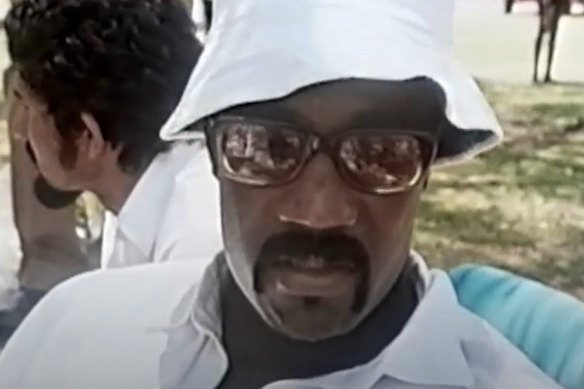
Clive Lloyd’s team were thrashed in Australia that summer, but went on to dominate world cricket. Credit: YouTube
“As independence moved along, a fair whack of the expatriate community left and the PNG community became more and more important in both cricket and footy.”
PNG became an associate member of the ICC in 1973, and has competed in the ICC Trophy since 1979.
Vai played a dozen times for his country, including three tours to England. He remains a Cricket PNG board member, and is looking forward to the Barramundis tackling Samoa and Oman in October in pursuit of a third T20 World Cup appearance in 2026.
The West Indies coming to town remains an untouchable memory.
“I faced the first ball of the match, bowled by Andy Roberts,” Vai says. “I can remember that very, very well. Quite hesitant, but I thought it was a very exciting occasion, so I took the punt. And it was a short one too!” He made one before lunging forward to Bernard Julien and popping a catch to Greenidge in his blue hat.
His opening partner, Nigel Agonia, played in both games, carrying his bat for an unbeaten 36 in Lae and backing up with 14. An average of 50 v the West Indies puts him in rare company. His all-round talents were such that commentator Jim Maxwell, when asked the scariest bowler he’d seen, recalled that Agonia “frightened the hell out of everyone” during his school days in Sydney.
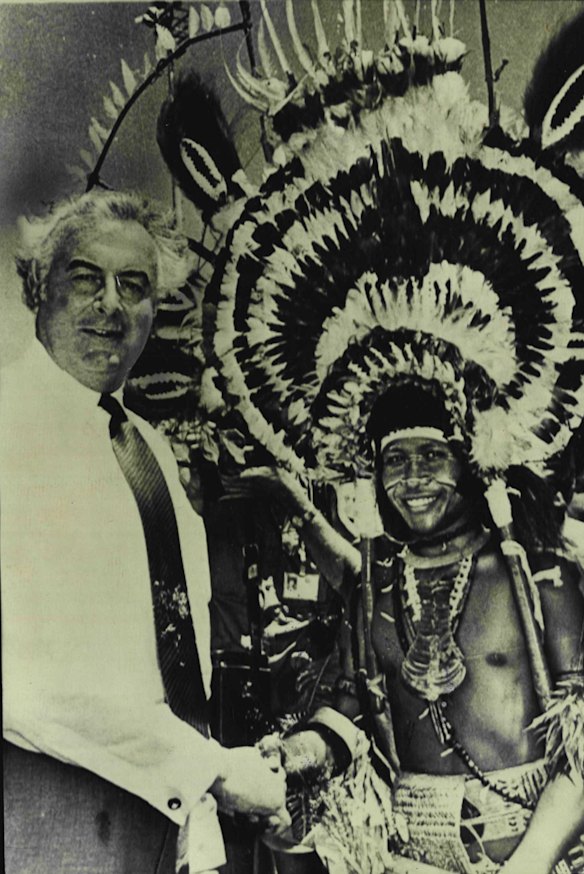
Gough Whitlam celebrates Papua New Guinea independence on September 15, 1975.Credit: The Age
Outside six Tests and a single one-day international, the West Indies played 10 tour matches in their 1975-76 summer – and two in Papua New Guinea. Ben Stokes’ England will play five Tests and spend the rest of their three-month tour training (and playing golf). Ili Tarua and Taunao Vai know well what the game has lost.
“Their visit did open the eyes of Papua New Guineans that they can think about a future playing international matches,” Tarua says. “That was a great encouragement to a lot of young people all over the country.”
Vai adds: “It came at a milestone of our country’s development, so we were very, very happy they were here. Happy also because at that time they were a top cricketing nation, that really added to the celebrations we had started when our independence came.
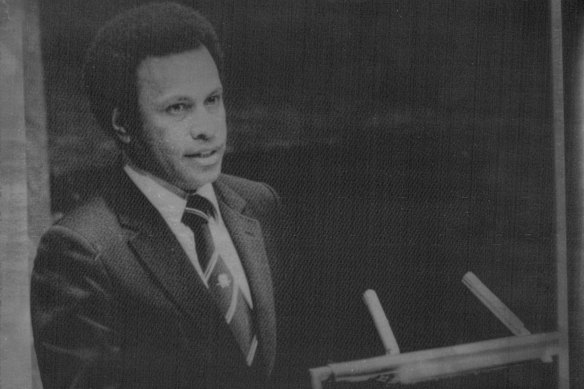
PNG cricketer Ilinome Tarua speaking to a session of the United Nations in 1980.Credit: AP Laserphoto
“That was quite a year. We were looking forward to being on our own politically at least. I was a timely celebration, especially for cricket as a sport.”
Loading
Told that Lloyd recalls it fondly too, a stunning snippet comes back to him.
“Clive Lloyd hit a six that went into the sea! The [Hubert Murray] stadium is close to the seashore, he hit one right into the sea, a huge six! We never recovered that ball.”
Lloyd top-scored with 88 in that Port Moresby game, and is disappointed the moment is lost among a lifetime of cricket memories. “How many did I make? 88? Oh dear, I must go back again!”
News, results and expert analysis from the weekend of sport are sent every Monday. Sign up for our Sport newsletter.

